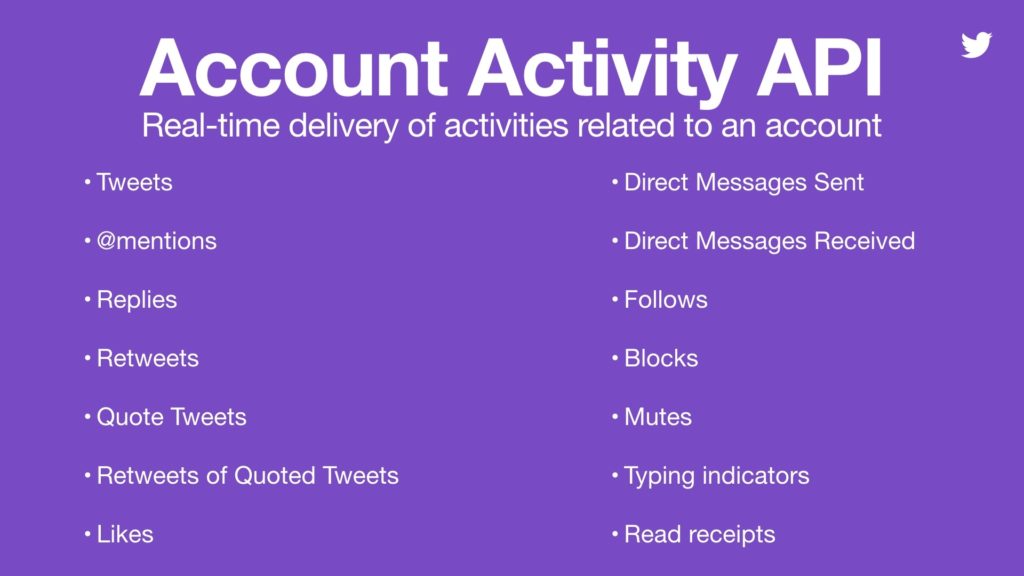Twitter’s releasing an updated version of its Account Activity API, which will provide new opportunities for developers to build improved bot experiences on the platform, while they’re also rolling back some of their customer service features on profiles which had been released as part of their Direct Message beta program.
With chatbots becoming a key focus in 2017, Twitter has moved to provide its own options on this front, rolling out their Direct Message APIs back in April, which focused on providing more options for bot activity.
Their latest API release refines their approach, giving developers access to a broader range of account activities, through which they can build more comprehensive bot experiences.
“The Account Activity API enables developers to receive the full set of activities related to an account in real time. Today, we’re releasing the enterprise version of the Account Activity API, which is designed for those who need data for a large number of accounts, multiple webhook URLs, reliability features such as retries, or managed support.”
And while developing bots is obviously a more advanced function, Twitter’s also providing new Direct Messaging tools, including nameable and editable welcome messages, and read receipts and typing indicators to help enhance bot interactions.
At the same time, Twitter’s also announced that they’ll be rolling back some of their Direct Message beta features, including support indicators, response hours, and the prominent message button on profiles.
These tools – which you’ve no doubt seen on profiles – will no longer be shown in the Twitter app after January 2018.
As noted, the announcement is aimed at more advanced Twitter usage, and the changes will have varying impact on your strategy – though the removal of the existing customer support display tools will be an obvious shift.
And while Twitter may not be known as the place for bots and automated interaction, the platform is a key facilitator for social customer service, and their options on this front should not be ignored.
Setting up a bot is not as easy as creating a profile, and may not currently be a DIY option, particularly for smaller operators, but the addition of new tools to facilitate such capacity will provide more options on this front. And as bots become more prevalent, that could enable greater opportunities.

